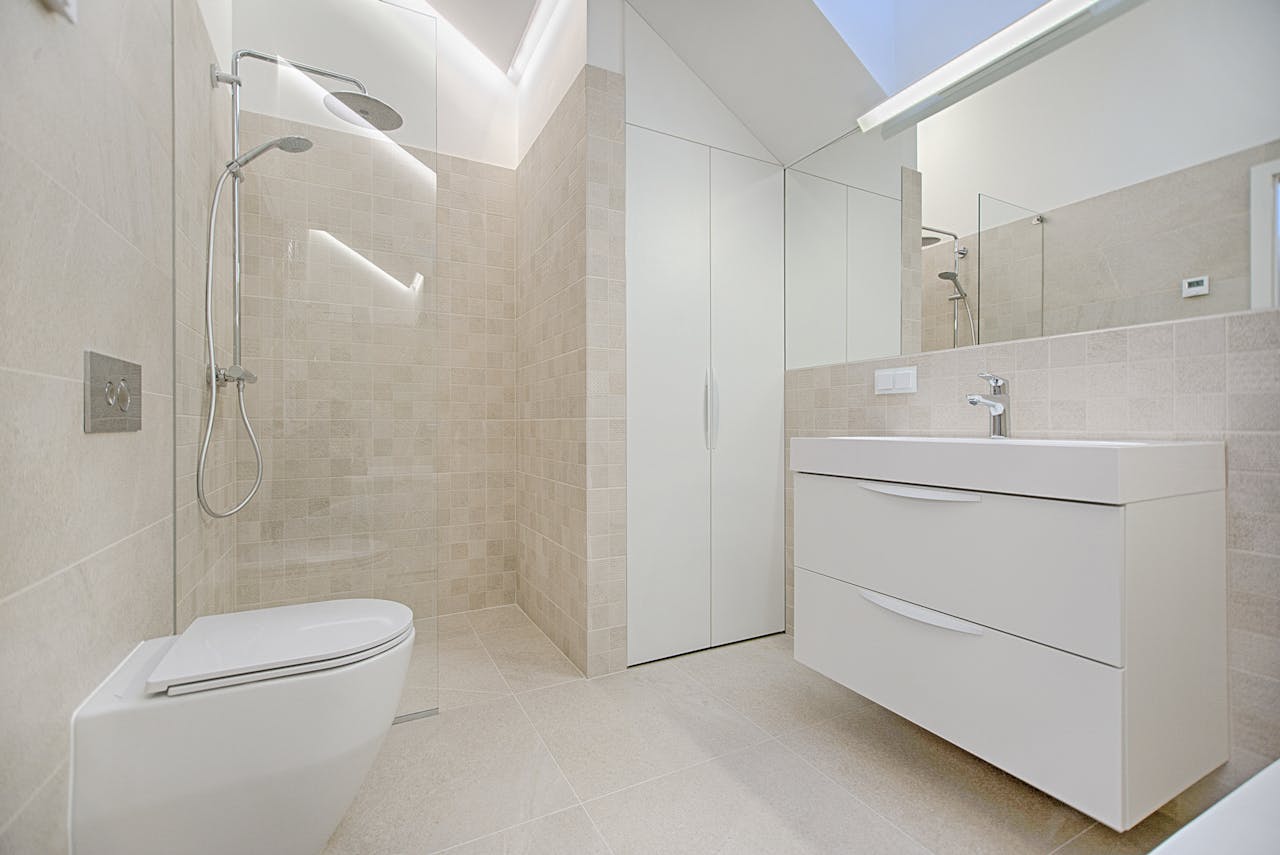Wet room vs bathroom choosing can be a challenging decision. Both options come with unique benefits and drawbacks that make them suitable for different needs and preferences. In this blog, we will break down the key differences, advantages, and considerations to help you decide which option is best suited for your home.
Wet Rooms: A Modern, Spacious Solution
Wet rooms have gained popularity in recent years due to their modern design and practical benefits. They create an open and airy atmosphere, making even the smallest spaces feel larger. This is particularly advantageous for homeowners looking to maximise every square inch of their bathrooms.
Waterproofing is essential in wet rooms. The entire space, including walls and floors, is designed to handle water exposure. This requires meticulous planning and specialised materials. While this may increase the initial cost, the result is a seamless, waterproof environment that reduces the risk of leaks and water damage.
One of the standout features of wet rooms is their accessibility. They offer level entry showers, eliminating the need for steps or thresholds, making them ideal for individuals with mobility challenges. This feature not only enhances safety but also adds a touch of luxury and convenience.
Maintenance and Cleaning
Wet rooms are generally easier to clean than traditional bathrooms. With fewer nooks and crannies, cleaning becomes a simpler task. However, they do demand regular maintenance to prevent potential water damage. Proper ventilation and periodic inspections ensure the longevity of your wet room.
Design Flexibility
When it comes to design, wet rooms offer unparalleled flexibility. Whether you favour a sleek, contemporary look or a more classic design, the open layout allows for creativity in fixtures and fittings. You can play around with various materials, colours, and textures to create a space that reflects your personal style.
Traditional Bathrooms: Versatility and Cost-Effectiveness
Traditional bathrooms have been the standard for decades, and for good reason. They offer a wide range of design options, from classic to modern styles, allowing homeowners to choose a look that complements the rest of their home.
Flexibility in Water Containment
Unlike wet rooms, traditional bathrooms have designated areas for wet and dry activities. This means you can have a shower, bath, and sink without worrying about water spreading across the entire floor. This flexibility in water containment can make traditional bathrooms a more practical choice for many homeowners.
Cost and Installation
Traditional bathrooms are often more cost-effective to install and renovate compared to wet rooms. The waterproofing requirements are less stringent, reducing the overall expense. Additionally, traditional bathrooms can be fitted with a variety of fixtures and materials, offering more choices to suit different budgets.
Maintenance and Cleaning
Traditional bathrooms are generally easier to maintain. The separation of wet and dry areas means fewer concerns about water damage, and cleaning routines can be less demanding. Regular household cleaning products are usually sufficient to keep a traditional bathroom in good condition.
Accessibility and Space Utilisation
While traditional bathrooms may not offer the same level of accessibility as wet rooms, they can still be designed to accommodate various needs. Grab bars, non-slip surfaces, and other modifications can be added to enhance safety for individuals with mobility challenges.
Making the Choice
Deciding between a wet room and a traditional bathroom ultimately depends on your specific needs, preferences, and budget. If you value a modern, spacious feel and need a solution that offers easy accessibility, a wet room might be the right choice. However, if you prefer a more versatile, cost-effective option that offers a broad range of design possibilities, a traditional bathroom may be better suited to your home.
Conclusion
Both wet rooms and traditional bathrooms have their own set of benefits and considerations. Wet rooms offer a contemporary, open feel with superior accessibility, while traditional bathrooms provide versatility and are often more budget-friendly. Understanding the distinct advantages of each option will help you make an informed decision that enhances your home and meets your needs.
